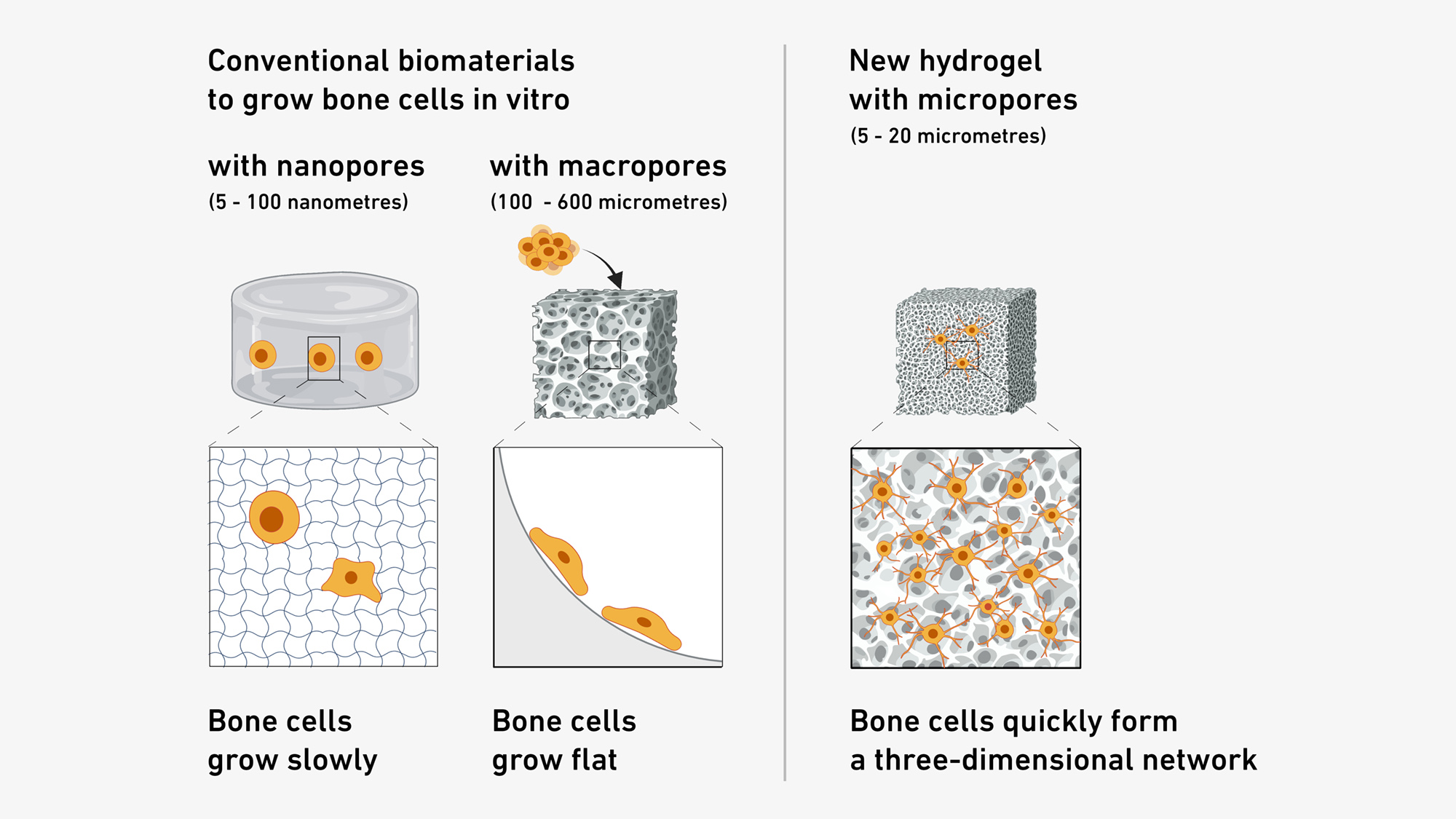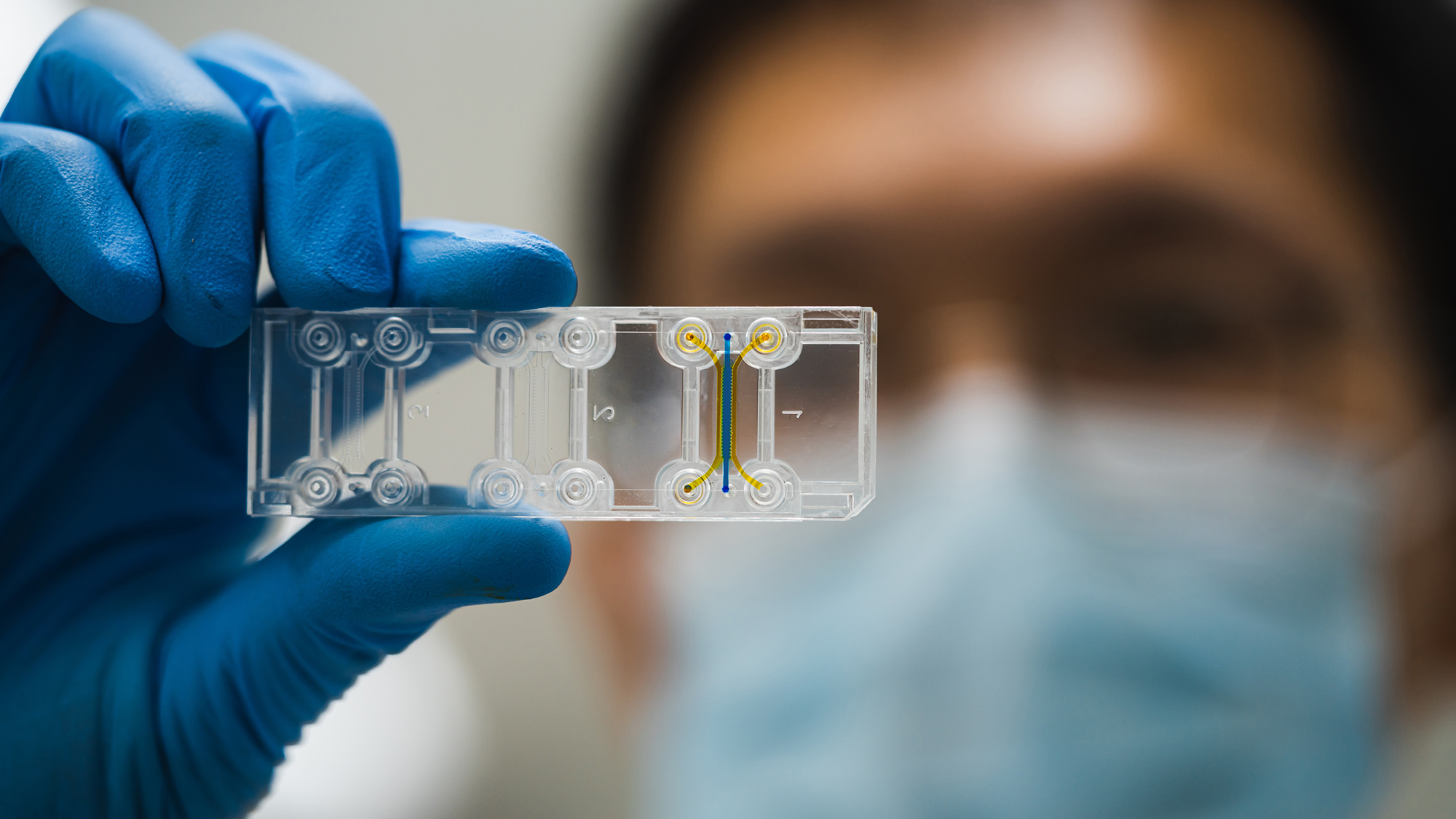Biomaterials for bone models
Imagine a future where bone diseases such as osteoporosis can be studied and treated without relying on animal models. At the ETH Industry Day on November 21, Prof. Xiao-Hua Qin will present pioneering biomaterials that allow lab-grown bone tissues to mimic real human bones.

Visit the ETH Industry Day 2024 to learn more about this technology and to meet Prof. Xiao-Hua Qin. Secure your ticket now and benefit from a 50% ETH discount: Registration ETH Industry Day 2024
In the following interview Prof. Xiao-Hua Qin talks about possible applications of the technology and what kind of industrial partners he is looking for.
Xiao-Hua Qin, please describe your research in a few sentences.
We design, engineer, and synthesise biomaterials for 3-dimensional (3D) organoid culture and tissue printing. Organoid culture is a technique used to grow miniature, simplified versions of organs or tissues in the lab. Organoids are tiny structures derived from stem cells that we aim to grow so they mimic the structure and function of real organs. They need the right growth factors and nutrients but must also organise themselves into the layers and shapes that recapitulate part of an organ. Their shape and functionality largely depend on the matrix, which refers to the environment or network they grow in, and this is what we look at. We use novel matrix materials and synthetic strategies to better control the properties of the resulting organoid models.
So far, we are focusing on organoids for human bone. In this regard, we have developed a novel hydrogel with micropores that are just the right size (5 to 20 micrometres) to allow bone cells to form a 3D network quickly. Previous biomaterials had pore sizes either too small or too big for optimal bone cell growth and other adverse properties. We have been able to overcome these issues to create a better lab-grown bone model.

What are the most important applications of your research?
Our research has three key applications, one of which is disease modelling. Organoids offer a more advanced alternative to cell cultures, but without the need for animal models. They serve as a middle ground between simple cell cultures and animal models and can replace the latter in many cases. In this regard, we participate in a Switzerland-wide research effort to replace animal testing, the external page Advancing 3R programme.
This brings us to the second key application: the miniature disease models we develop enable fast and rather easy drug testing, in our case for bone diseases, as they provide an alternative to animal models. Testing drugs in an animal is generally slow, expensive, and raises ethical concerns about the harm to animals and whether such testing is justifiable.
Recently, we have developed a disease model for the rare brittle bone disease, which highlights the third key application of organoids: advancing personalised medicine. Organoids can be grown from a patient’s own cells to test how their body might respond to different treatments. We are currently collaborating with Kinderspital Zürich to test our brittle bone disease model using cells from young patients with this condition.
The model will generally facilitate studies on osteogenesis or early bone development, a process that is poorly understood so far but plays a crucial role in many bone diseases. We believe that our model can be further refined to study more common bone diseases, such as osteoporosis.

What kind of industrial or institutional partners are you looking for?
For patient studies, hospitals are a valid and welcome potential partner.
Pharmaceutical companies are also promising potential partners for us, especially as they are well represented in Switzerland. Additionally, companies specialising in 3D printing with cells and organ-on-a-chip techniques might be good fits for partnering up.
What kind of projects can you imagine working on, with partners such as hospitals or pharmaceutical companies?
Potential joint projects with pharmaceutical companies could entail targeted drug development - drug candidates developed by the pharmaceutical companies could be tested on the bone models.
Further, we developed a special type of coumarin-based hydrogel that can be quickly 3D-printed using a laser, even with cells present. We believe this technology has the potential to enable exciting new applications, such as targeted drug delivery or using light to control the growth of organoids.
All companies working on organoid model development, drug development for bone diseases, researching bone regeneration and musculoskeletal tissues, or printing tissues, might overlap with our research interests and we are interested in getting in touch with them. Besides my talk at the ETH Industry Day 2024, I and members of my research group will also be present the whole day of November 21 in the accompanying exhibition of the event– we look forward to meeting you there and discussing potential collaboration.
Besides scientific expertise, how important are personal aspects when working with a partner? What are your experiences within the ongoing joint research project with Kinderspital Zürich?
It is going quite strong, we appreciate the opportunity to work with the colleagues from Kinderspital. Things like mutual trust, reliability, and openness towards the ideas of one party are key when starting a collaboration - but I guess my focus has been on the science and in that case, that of our partners too, especially as this might open up a chance to help these young patients.
Contact/Links:
Laboratory for Bone Biomechanics, Prof. Xiao-Hua Qin
Related news:
Gaining a better understanding of brittle bone disease – without animal experiments (ETH News)
Do you want to get more "News for Industry" stories?
external page Follow us on LinkedIn
Are you looking for research partners at ETH Zurich?
Contact ETH Industry Relations